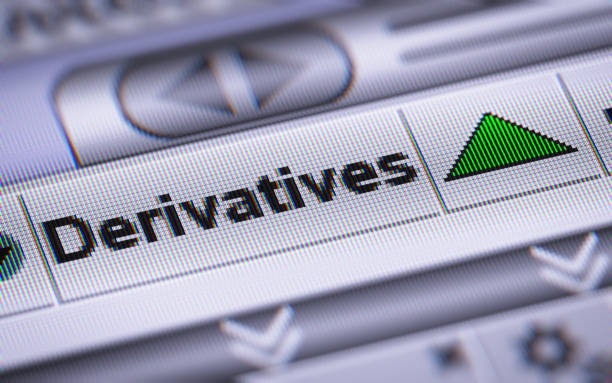
In this article, we’ll dive deep into the psychology behind the price action patterns, why they matter, and how traders can use them to improve their edge in the Indian stock market.
Psychology Behind Price Action: Why Traders Should Watch Wicks, Rejections & False Breakouts More Carefully
In the stock market, price action is often called the “language of the charts.” It reflects the raw movements of price without the noise of lagging indicators. Behind every candle lies a story of buyer vs. seller psychology—fear, greed, hope, and panic.
For traders, understanding this psychology is critical. Among the most telling elements of price action are wicks, rejections, and false breakouts. These often act as footprints of smart money and can provide early warning signals for both opportunities and traps.
The Psychology of Price Action
Before analyzing specific patterns, it’s important to understand what price action really represents.
Every candle on the chart is the result of a battle between buyers and sellers.
- If buyers dominate, the candle closes higher.
- If sellers dominate, the candle closes lower.
- If both are evenly matched, indecision candles (like doji) appear.
Unlike technical indicators (RSI, MACD, etc.), which interpret past data, price action shows real-time trader psychology. The emotions of retail traders and the strategic moves of institutional players are both visible through wicks, rejections, and breakouts.
Understanding Wicks (Shadows)
A wick (or shadow) is the thin line above or below the body of a candlestick. It tells us where price moved during the candle’s timeframe but could not sustain.
What Wicks Represent
- Upper Wick (long): Buyers tried to push the price higher, but sellers overpowered them. This indicates selling pressure at higher levels.
- Lower Wick (long): Sellers pushed the price down, but buyers stepped in strongly. This shows buying support at lower levels.
The Psychology Behind Wicks
- A long wick often signals rejection of a price level.
- It represents the collective emotions of traders who tried to push the price but failed.
- For example, a long upper wick near resistance shows greed and FOMO buying—but smart money sold aggressively.
Trading Lesson
- Wicks near support or resistance zones carry high importance.
- Example: If Nifty forms a long lower wick near a demand zone, it signals accumulation and possible reversal.
- On the other hand, repeated long upper wicks near a resistance zone could warn of a potential breakdown.
Price Rejections
Price rejection is when the market refuses to stay at a certain level. This usually appears in the form of pin bars, hammer, inverted hammer, or shooting star candles.
What Rejection Candles Indicate
- They show a failed attempt by one side (buyers or sellers) to dominate.
- Rejections are strongest when they occur at key levels (previous highs/lows, supply/demand zones, moving averages).
The Psychology of Rejection
- At rejection points, market participants test the level.
- Example: Price breaks above resistance intraday but closes below it by the end of the session → sellers refused to let buyers win.
- This rejection represents smart money defending a level.
Why Traders Should Care
- Rejection candles provide early reversal clues.
- A pin bar at support often precedes a bounce.
- A shooting star at resistance can precede a correction.
👉 Rejections are like the market saying: “I am not ready to go higher/lower yet.”
False Breakouts (Traps)
A false breakout happens when price moves beyond a key level (support or resistance) but then reverses sharply. These are often referred to as bull traps or bear traps.
The Psychology of False Breakouts
- Retail traders chase breakouts (fear of missing out).
- Institutions use these levels to trigger stop-losses and gather liquidity.
- Once liquidity is absorbed, smart money pushes price in the opposite direction.
For example:
- Bull Trap: Price breaks above resistance, retail traders buy, but then price reverses sharply downward.
- Bear Trap: Price breaks below support, traders short, but price quickly reverses upward.
Why They Matter
- False breakouts are designed to trick retail traders.
- They are powerful because they flush out weak hands before the real move starts.
- Spotting them can save traders from losses and even provide high-probability counter-trend entries.
Common Thread: Market Psychology
Wicks, rejections, and false breakouts are not random—they are psychological footprints.
- Fear: Traders panic when price breaks support, only to realize it was a false move.
- Greed: Traders chase breakouts too aggressively, only to be trapped.
- Hope: Retail participants hold onto trades despite signs of rejection.
- Manipulation: Institutions use liquidity traps to enter at favorable prices.
The lesson: Price action reveals the collective emotions of the market.
Practical Trading Tips
To use these patterns effectively, traders must go beyond theory:
✅ Confirm with Volume
- A wick with strong volume adds credibility (genuine rejection).
- A breakout with low volume is likely to fail.
✅ Use Higher Timeframes
- False breakouts on a 5-minute chart may just be noise.
- Rejections on daily/weekly charts carry far more weight.
✅ Combine with Support & Resistance
- Always look for these patterns at important levels, not in the middle of nowhere.
- A long wick at a strong supply zone means more than one in random price action.
✅ Wait for Confirmation
- Don’t jump into trades immediately after spotting a wick.
- Wait for the next candle to confirm direction.
✅ Manage Risk Smartly
- Keep stop-losses just beyond wicks or false breakout levels.
- Position size carefully; don’t risk more than 1–2% per trade.
Historical Examples from Indian Markets
- Nifty 2020 (COVID Crash)
- Multiple false breakdowns below support zones before a historic rally.
- Lower wicks showed heavy accumulation by institutions.
- Reliance Industries (2021)
- Several rejections near ₹2,400 zone before finally breaking out.
- Wicks and rejections gave early signals of accumulation.
- Bank Nifty (2023)
- False breakout above 45,000 triggered retail buying, but the index reversed, trapping late entrants.
These examples prove that patterns repeat because psychology doesn’t change.
Conclusion
Price action is more than candlesticks—it is a mirror of market psychology.
- Wicks reveal rejection of price levels.
- Rejections show strong order flow and unwillingness to cross certain zones.
- False breakouts expose traps set for retail traders.
By learning to read these signs, traders can avoid costly mistakes, stay ahead of traps, and align themselves with the moves of smart money.
Remember, the stock market is less about predicting the future and more about understanding the psychology of the present.




